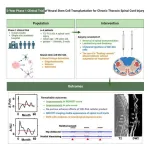(Press-News.org) Scientists mapped near-gap-free and near-error-free genomes of a susceptible bed bug strain and a superstrain around 20,000 times more insecticide-resistant, offering the broadest look yet at the full scope of their resistance mutations.
Their findings were published in the journal Insects.
Although there is no evidence that bed bugs transmit diseases to humans, their bites can cause itchy rashes and secondary skin infections. Widespread use of insecticides, including the now-banned DDT, nearly wiped out populations of these blood-sucking insects by the 1960s, making infestations rare. But over the past 20 years, the world has witnessed their resurgence, partly due to resistance mutations they developed against these insecticides.
Resistance can occur through different mechanisms, such as by producing enzymes that detoxify the insecticides (metabolic resistance) or developing thicker outer layers to block the chemicals (penetration resistance). Past studies have identified some of the mutations and gene expressions linked to insecticide resistance. However, the full extent of mutations driving resistance remains unknown as no research has sequenced the whole genome of insecticide-resistant strains.
A research team led by Hidemasa Bono, professor at Hiroshima University’s (HU) Graduate School of Integrated Sciences for Life, mapped genomes of susceptible and resistant bed bug strains from Japan to address this gap. They obtained susceptible strains descended from wild bed bugs (Cimex lectularius) collected 68 years ago in fields at Isahaya City, Nagasaki. Meanwhile, the resistant strains were bred from specimens collected from a Hiroshima City hotel in 2010. Their tests revealed that the resistant samples had 19,859-fold stronger resistance to pyrethroids — the most commonly used insecticide for bed bug control — exceeding levels seen in many previously identified superstrains. All the specimens were provided by Fumakilla Limited, a Japan-based chemical manufacturing company.
Piecing together the genome puzzle
Sequencing a genome is like assembling a massive jigsaw puzzle, spanning anywhere from about 160,000 to 160 billion pieces. To map the most complete bed bug genomes to date, researchers used the breakthrough method of long-read sequencing, which captures longer stretches of DNA—akin to having entire sections of puzzle pieces put together. Traditional short-read sequencing, by contrast, only covers tiny snippets, often leading to frustrating gaps.
The researchers assembled a near-total picture of the two genomes with just about every piece precisely where it belonged, achieving 97.8% completeness and quality value (QV) of 57.0 for the susceptible strain and 94.9% completeness and QV of 56.9 for the resistant strain. A QV above 30 indicates high-quality sequences with less than 0.1% error rate. Both also surpassed the N50 value of the existing C. lectularius reference genome, Clec2.1, from a previous sequencing effort, meaning there were fewer gaps and more complete sections of the genome puzzle.
Known, new resistance mutations uncovered
After fully sequencing the genomes, the team identified protein-coding genes, determined their functions, and assessed if they were active through transcriptional analysis. They uncovered 3,938 transcripts with amino acid mismatches. Of these, 729 mutated transcripts were linked to insecticide resistance.
“We determined the genome sequence of insecticide-resistant bed bugs, which exhibited 20,000-fold greater resistance compared to susceptible bed bugs. By comparing the amino acid sequences between the susceptible and resistant bed bugs, we identified 729 transcripts with resistance-specific mutations,” said study first author Kouhei Toga, postdoctoral researcher at the Laboratory of Genome Informatics of HU’s Graduate School of Integrated Sciences for Life.
“These transcripts included genes related to DNA damage response, cell cycle regulation, insulin metabolism, and lysosome functions. This suggests that these molecular pathways may play a role in the development of pyrethroid resistance in bed bugs.”
By drawing on previous insect studies, the researchers confirmed known resistance mutations and discovered new ones that could inform more targeted and effective pest control strategies.
“We identified a large number of genes likely involved in insecticide resistance, many of which have not been previously reported as being associated with resistance in bedbugs. Genome editing of these genes could provide valuable insights into the evolution and mechanisms of insecticide resistance,” Toga said.
“Additionally, this study expands the pool of target genes for monitoring allele distribution and frequency changes, which could contribute significantly to assessing resistance levels in wild populations. This work highlights the potential of genome-wide approaches in understanding insecticide resistance in bed bugs.”
Other research team members include Fumiko Kimoto and Hiroki Fujii, who are employees of Fumakilla Limited.
###
About Hiroshima University
Since its foundation in 1949, Hiroshima University has striven to become one of the most prominent and comprehensive universities in Japan for the promotion and development of scholarship and education. Consisting of 12 schools for undergraduate level and 4 graduate schools, ranging from natural sciences to humanities and social sciences, the university has grown into one of the most distinguished comprehensive research universities in Japan. English website: https://www.hiroshima-u.ac.jp/en
END
Study maps bed bugs’ genomes in unprecedented detail to find out why they just won’t die
2024-12-17
ELSE PRESS RELEASES FROM THIS DATE:
SwRI awarded $26 million to develop NOAA magnetometers
2024-12-17
SAN ANTONIO — December 17, 2024 —NASA and the National Oceanic and Atmospheric Administration (NOAA) recently awarded Southwest Research Institute a $26 million contract to develop magnetometers for NOAA’s Space Weather Next (SW Next) program for two missions to be launched in 2029 and 2032. The magnetometers will measure the interplanetary magnetic field carried by the solar wind.
“The instruments provide critical data to NOAA’s Space Weather Prediction Center which issues forecasts, warnings and alerts that help mitigate space weather impacts,” said Dr. Roy Torbert, a program director in SwRI’s Earth, Oceans, and Space office ...
Being digitally hyperconnected causes ‘techno-strain’ for employees
2024-12-17
A new study has shown that employees are experiencing mental and physical techno-strain due to being ‘hyperconnected’ to digital technology making it difficult for people to switch off from work.
Researchers from the University of Nottingham’s Schools of Psychology and Medicine conducted detailed interviews with employees from a range of professions and found that the cognitive and affective effort associated with constant connectivity and high work pace driven by the digital workplace is detrimental to employee wellbeing. The results have been published today in Frontiers in Organizational Psychology.
This new paper is the final part of a research ...
Missing rebound: Youth drug use defies expectations, continues historic decline
2024-12-17
Image
Adolescent drug use continued to drop in 2024, building on and extending the historically large decreases that occurred during the pandemic onset in 2020.
"I expected adolescent drug use would rebound at least partially after the large declines that took place during the pandemic onset in 2020, which were among the largest ever recorded," said Richard Miech, team lead of the Monitoring the Future study at U-M's Institute for Social Research.
"Many experts in the field had anticipated that drug use would resurge ...
Announcing the 2024 Mcknight Brain Research Foundation Innovator Awards in Cognitive Aging and Memory Loss
2024-12-17
NEW YORK CITY and ORLANDO— The American Federation for Aging Research (AFAR) and the McKnight Brain Research Foundation (MBRF) are pleased to announce the 2024 recipients of The McKnight Brain Research Foundation Innovator Awards in Cognitive Aging and Memory Loss: Janine Kwapis, PhD, of Pennsylvania State University, and Sanaz Sedaghat, PhD, of the University of Minnesota.
Now in its fourth year, the Innovator Awards provide funding to research scientists pursuing groundbreaking studies in the field of cognitive aging.
Janine Kwapis, PhD, is an Assistant Professor and Paul Berg Early Career Professor ...
Study shows drop in use of antiviral medications in young children with influenza
2024-12-17
Despite national medical guidelines supporting the use of antiviral medications in young children diagnosed with influenza, a recent study reports an underuse of the treatment.
“Antiviral Use Among Children Hospitalized with Laboratory-Confirmed Influenza Illness: A Prospective, Multicenter Surveillance Study” was published in Clinical Infectious Diseases, the flagship journal of the Infectious Diseases Society of America.
Flu illness accounts for up to 10% of all pediatric hospitalizations during ...
Generative AI against diseases: Insilico Medicine announced Pharma.AI-powered HPK1 inhibitor series in peer-reviewed publication trilogy, as potential immunotherapy options
2024-12-17
Hematopoietic progenitor kinase 1 (HPK1), a member of the Ste20 serine/threonine kinases family, negatively regulates T cell function and is considered a promising target for immunotherapy. Despite the promising efficacy demonstrated in preclinical models, no HPK1 inhibitors are currently approved for clinical use, due to challenges including balance between kinase selectivity and pharmacokinetic properties.
CAMBRIDGE, Mass., Dec 17, 2024 --- Insilico Medicine (“Insilico”), a clinical-stage generative artificial intelligence (AI)-driven drug discovery company, is proud to announce its latest AI-powered ...
Cases of whooping cough growing, but knowledge about it is lacking
2024-12-17
PHILADELPHIA – Following a several-year lull during the pandemic, cases of whooping cough are increasing across the United States. As of Nov. 30, early U.S. data show over 28,000 cases reported this year, or six times as many as in the same period in 2023, according to the Centers for Disease Control and Prevention (CDC).
Whooping cough or pertussis, a highly contagious bacterial infection of the respiratory tract, was one of the most common childhood diseases in the 20th century and a major cause ...
Research alert: Neural stem cell transplantation shows promise for treating chronic spinal cord injury
2024-12-17
A Phase I clinical trial led by researchers at University of California San Diego School of Medicine has demonstrated the long-term safety and feasibility of neural stem cell transplantation for treating chronic spinal cord injuries. These devastating injuries often result in partial or full paralysis and are currently incurable. The study, which followed four patients with chronic spinal cord injuries for five years, found that two patients showed durable evidence of neurological improvement after treatment with neural stem cell implantation, including increased ...
Gruyère cheese, or a history of the domestication of bacteria
2024-12-17
The domestication of plants and animals has played a key role in the development of human societies. And microbes, too, have been tamed: a study by UNIL, published in the journal Nature Communications, shows that the bacteria used to produce Gruyère, Emmental and Sbrinz cheese show signs of ancient domestication.
The domestication of livestock and plants marked an important stage in the settlement of human populations in the Neolithic period, as they moved from a hunter-gatherer lifestyle to a subsistence model based on animal husbandry and agriculture. Because of the microscopic size and virtual absence of fossils ...
Simulating natural selection in assisted reproduction
2024-12-17
A Perspective summarizes the risks of bypassing natural selection when using assisted reproductive technologies (ART) in humans and livestock. The authors call for dialogue between the fields of assisted reproduction and evolutionary biology.
Jonathan P. Evans and Francisco Garcia-Gonzalez detail how techniques used in ART, including in vitro fertilization, artificial insemination, and intracytoplasmic sperm injection, can stress and damage gametes and embryos and lead to deleterious epigenetic changes in offspring. Some ART techniques also bypass a system of filters in the female reproductive tract that select healthy sperm and may lead to better genetic matches with ...









